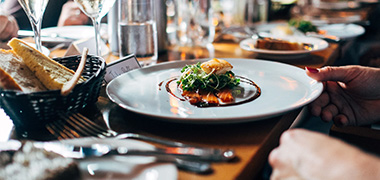
Unfortunately, we currently have no courses available to show you
Common questions
Art Historians generally earn between $80,000 and $100,000 per annum. You can increase your earning capacity by publishing books, papers, and educational materials based on your research.
 Courses.com.au Team
Courses.com.au Team
There are currently about 500 historians currently working in Australia, some of these are art historians. They work for universities and academic institutions, libraries, art galleries, art museums, and cultural centres. Art Historians are sometimes hired as independent consultants to film, documentary, and screen media studios to ensure the historical accuracy of costumes, art and furnishings in their productions. They can also be sourced for interviews and magazine articles by journalists and media companies.
 Courses.com.au Team
Courses.com.au Team
To become a Art Historian you will need a Bachelor of Fine Art or Bachelor of Arts (Art History). Many Art Historians also have post-graduate qualifications in specialist areas like indigenous art, Australian colonial art, classical art, and the development of graffiti and street art. If you have your heart set on a career as an Art Historian, you will also benefit by honing your written communication skills and learning the Microsoft Office Suite (Word, Excel, Powerpoint) with proficiency.
Source: Australian Government Labour Market Insights 2023
 Courses.com.au Team
Courses.com.au Team
Related career opportunities
Browse occupations related to Art Historian
Further reading


Choosing a security licence course in Australia: A step-by-step guide for jobseekers
10th November 2023
Career spotlight: Hospitality professionals
17th September 2019Art Historian careers
Are you passionate about studying art and its historical significance? Enrol in Art Historian courses in Canberra to explore the rich narratives behind creative expressions. Canberra is home to various prestigious institutions offering accredited training programs designed to equip you with the skills needed for a successful career as an Art Historian. These courses cover essential topics such as art interpretation, cultural analysis, and the sociopolitical impact of art throughout the ages.
As you delve into the realm of art history through specialised training, you will also uncover how such a career intertwines with other fields. If you have an interest in arts and culture, consider reviewing related courses in Arts and Culture. They can provide further context and depth to your understanding of art's place in society. In Canberra, local RTOs offer comprehensive training that often leads to exciting job opportunities within the cultural sector.
Completing an Art Historian course opens the door to various related career paths. For example, you could explore becoming a Library Assistant or a Museum Assistant, where you can be directly involved in preserving and showcasing art collections. Alternatively, if your interests lie in curatorial work, you might aspire to become a Curator or a Museum Curator, roles that allow you to shape how art is presented to the public.
Furthermore, an education in art history equips you with transferable skills that are valuable in numerous other professions. Positions such as Librarian or Archivist, for instance, allow you to engage with historical materials and contribute to knowledge preservation in similar ways to Art Historians. The versatility of this training makes it appealing to a broad array of students and career changers alike.
For those looking to advance their expertise, consider focusing on a niche aspect of art history or seeking roles as a Heritage Consultant or Historian. Each role plays a unique part in the broader context of art and culture, ensuring that historical narratives are accurately told and appreciated. Start your journey today by exploring available Art Historian courses in Canberra and take the first step towards contributing to the vibrant world of art history.
